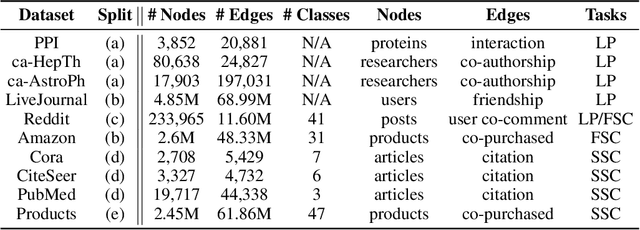Elan Markowitz
KG-LLM-Bench: A Scalable Benchmark for Evaluating LLM Reasoning on Textualized Knowledge Graphs
Apr 09, 2025Abstract:Knowledge graphs have emerged as a popular method for injecting up-to-date, factual knowledge into large language models (LLMs). This is typically achieved by converting the knowledge graph into text that the LLM can process in context. While multiple methods of encoding knowledge graphs have been proposed, the impact of this textualization process on LLM performance remains under-explored. We introduce KG-LLM-Bench, a comprehensive and extensible benchmark spanning five knowledge graph understanding tasks, and evaluate how different encoding strategies affect performance across various base models. Our extensive experiments with seven language models and five textualization strategies provide insights for optimizing LLM performance on KG reasoning tasks.
Tree-of-Traversals: A Zero-Shot Reasoning Algorithm for Augmenting Black-box Language Models with Knowledge Graphs
Jul 31, 2024



Abstract:Knowledge graphs (KGs) complement Large Language Models (LLMs) by providing reliable, structured, domain-specific, and up-to-date external knowledge. However, KGs and LLMs are often developed separately and must be integrated after training. We introduce Tree-of-Traversals, a novel zero-shot reasoning algorithm that enables augmentation of black-box LLMs with one or more KGs. The algorithm equips a LLM with actions for interfacing a KG and enables the LLM to perform tree search over possible thoughts and actions to find high confidence reasoning paths. We evaluate on two popular benchmark datasets. Our results show that Tree-of-Traversals significantly improves performance on question answering and KG question answering tasks. Code is available at \url{https://github.com/amazon-science/tree-of-traversals}
Multi-Task Knowledge Enhancement for Zero-Shot and Multi-Domain Recommendation in an AI Assistant Application
Jun 09, 2023Abstract:Recommender systems have found significant commercial success but still struggle with integrating new users. Since users often interact with content in different domains, it is possible to leverage a user's interactions in previous domains to improve that user's recommendations in a new one (multi-domain recommendation). A separate research thread on knowledge graph enhancement uses external knowledge graphs to improve single domain recommendations (knowledge graph enhancement). Both research threads incorporate related information to improve predictions in a new domain. We propose in this work to unify these approaches: Using information from interactions in other domains as well as external knowledge graphs to make predictions in a new domain that would be impossible with either information source alone. We apply these ideas to a dataset derived from millions of users' requests for content across three domains (videos, music, and books) in a live virtual assistant application. We demonstrate the advantage of combining knowledge graph enhancement with previous multi-domain recommendation techniques to provide better overall recommendations as well as for better recommendations on new users of a domain.
Graph Traversal with Tensor Functionals: A Meta-Algorithm for Scalable Learning
Feb 08, 2021



Abstract:Graph Representation Learning (GRL) methods have impacted fields from chemistry to social science. However, their algorithmic implementations are specialized to specific use-cases e.g.message passing methods are run differently from node embedding ones. Despite their apparent differences, all these methods utilize the graph structure, and therefore, their learning can be approximated with stochastic graph traversals. We propose Graph Traversal via Tensor Functionals(GTTF), a unifying meta-algorithm framework for easing the implementation of diverse graph algorithms and enabling transparent and efficient scaling to large graphs. GTTF is founded upon a data structure (stored as a sparse tensor) and a stochastic graph traversal algorithm (described using tensor operations). The algorithm is a functional that accept two functions, and can be specialized to obtain a variety of GRL models and objectives, simply by changing those two functions. We show for a wide class of methods, our algorithm learns in an unbiased fashion and, in expectation, approximates the learning as if the specialized implementations were run directly. With these capabilities, we scale otherwise non-scalable methods to set state-of-the-art on large graph datasets while being more efficient than existing GRL libraries - with only a handful of lines of code for each method specialization. GTTF and its various GRL implementations are on: https://github.com/isi-usc-edu/gttf.
 Add to Chrome
Add to Chrome Add to Firefox
Add to Firefox Add to Edge
Add to Edge